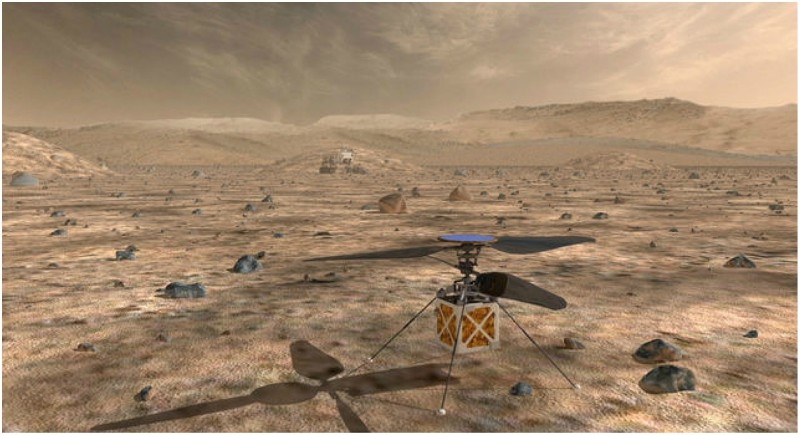NASA accepts one of the biggest engineering challenges; will send helicopter to fly in unusual atmosphere of Mars
Washington, June 26: Now NASA is heading towards sending a helicopter which can fly in the thin Martian air and take it a step ahead in Mar’s exploration, findings and research. It will deliver a groundbreaking technology demonstration: the first helicopter to ever fly on a planetary body other than Earth. This Mars Helicopter will demonstrate the first controlled, powered, sustained flight on another world. It could also pave the way for future missions that guide rovers and gather science data and images at locations previously inaccessible on Mars. This exciting new technology could change the way NASA explore Mars.

One of the biggest engineering challenges is getting the Mars Helicopter’s blades just right. They need to push enough air downward to receive an upward force that allows for thrust and controlled flight — a big concern on a planet where the atmosphere is only one percent as dense as Earth’s. “No helicopter has flown in those flight conditions – equivalent to 100,000 feet (30,000 meters) on Earth,” said Bob Balaram, chief engineer for the project
To compensate for Mars’ thin atmosphere, the blades must spin much faster than on an Earth helicopter, and the blade size relative to the weight of the helicopter has to be larger too. The Mars Helicopter’s rotors measure 4 feet wide (about 1.2 meters) long, tip to tip. At 2,800 rotations per minute, it will spin about 10 times faster than an Earth helicopter.
Over a 30-day period on Mars, the helicopter will attempt up to five flights, each time going farther than the last. The helicopter will fly up to 90 seconds at a time, at heights of up to 10 to 15 feet (3 to 5 meters). Engineers will learn a lot about flying a helicopter on Mars with each flight since it’s never been done before!
The helicopter requires 360 watts of power for each second it hovers in the Martian atmosphere – equivalent to the power required by six regular lightbulbs. But it isn’t out of luck when its lithium-ion batteries run dry. A solar array on the helicopter will recharge the batteries, making it a self-sufficient system as long as there is adequate sunlight. Most of the energy will be used to keep the helicopter warm since nighttime temperatures on Mars plummet to around minus 130 degrees Fahrenheit (minus 90 Celsius). During daytime flights, temperatures may rise to a much warmer minus 13 to minus 58 degrees Fahrenheit to (minus 25 to minus 50 degrees Celsius) — still chilly by Earth standards. The solar panel makes an average of 3 watts of power continuously during a 12-hour Martian day.